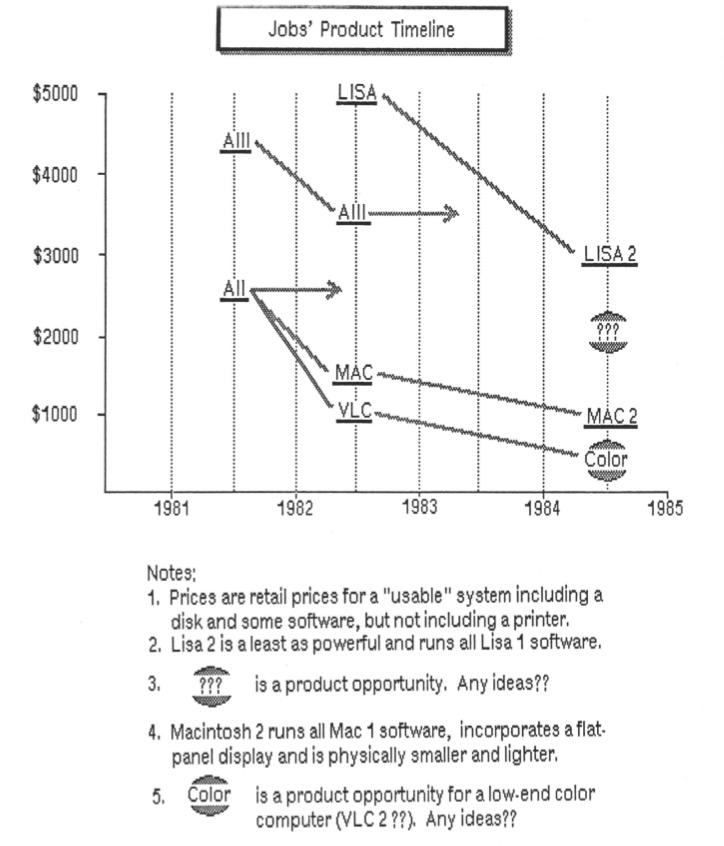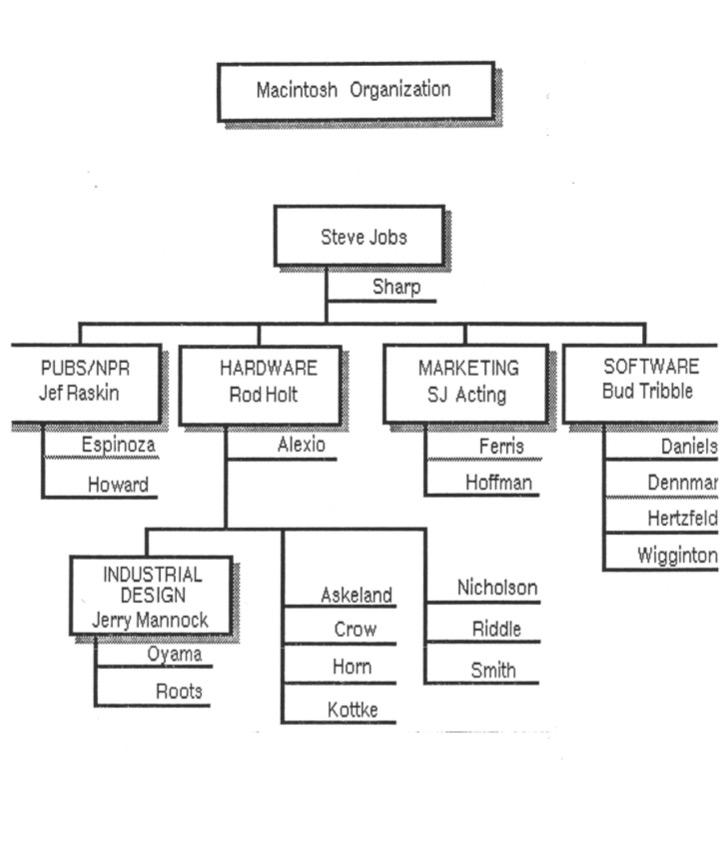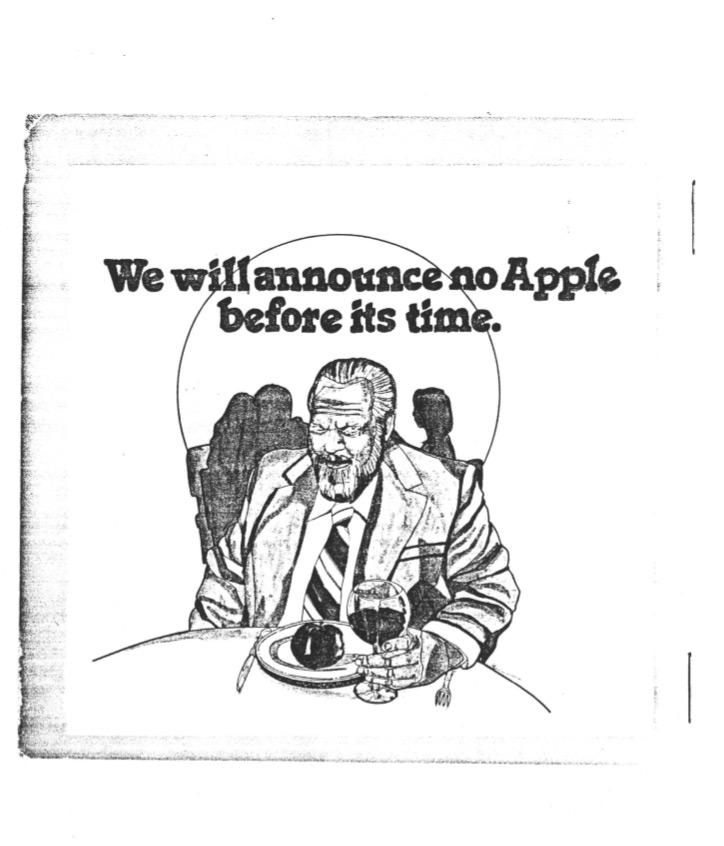The first is a Preliminary Confidential Offering Memorandum from 1977, donated by one of Apple’s initial investors, Mike Markkula, while the second is a Macintosh Business Plan from 1981, donated by Dan Kottke, the company's first employee.
The Preliminary Confidential Offering Memorandum outlines the offering of up to 150,000 shares of common stock, supported by an evaluation of the market and competitors in relation to Apple’s products and strategy. This was the first offering of shares for the fledgling company following its founding by Steve Jobs and Steve Wozniak. Among the risk factors listed at the start of the document are an acknowledgement of the company’s newness without an established history on which forecasts could be based, as well as a management team that was "young and relatively inexperienced in the high volume consumer electronics business."
The memo goes on to describe the primary target market – the Personal Computer Market. With a home computer, the average consumer could reap such benefits as "personal pleasure and enjoyment," "elimination of wasted paper, energy and storage space," and an "improved standard of living." However, developing this market was seen as a significant challenge, requiring at least two hours of discussion to "convince 'Joe Average' that he needs a computer." Apple planned to rely on mass media outlets to reach out to consumers to provide this education.
The documents outline current and planned products in detail, showing the existing Apple II computer with a manufacturing cost between $300 and $400, with key features such as dual-mode color graphics and fan-less cooling, putting it an estimated 12 months ahead of competing products. The Apple IIA, with manufacturing costs between $225 and $300, would yield a gross profit of up to $700 with a planned retail price of $995. Several peripheral releases planned through 1978 are also itemized, including items like a Telephone Interface Board and a Voice Recognition System.
In targeting the Personal Computer Market, Apple expected its primary competition to come from Commodore Business Machines and Tandy Corporation, but expressed optimism in relation to Apple products with more expandability and better-trained service staff. In relation to the Tandy TRS 80 machine, the competitor analysis goes so far as to state that the Apple IIA will "definitely outsell the TRS 80 'hands down' regardless of the large number of potential retail locations in the Radio Shack chain." Texas Instruments and Atari are mentioned as upcoming competitors with the ability to obtain substantial shares of the market.
The memo also reveals philosophies that appear to exist at Apple to this day. Described in the Appendix, the Apple Software Bank – a repository of software created both by users and Apple – was created to "increase the usefulness and enjoyment of the Apple II system" and "with the user in mind." In describing the distribution strategy, the desire to "insure that each customer establishes a positive on-going relationship with the local Apple dealer" is expressed as a key approach.
The 1981 Business Plan document provides detailed information on Apple’s product line at the time, lining up each in a price Band among competitor products and touting that "the advantage of a product line is that each individual product does not have to do everything." Each product is also targeted at specific market segments, such as managers, secretaries, and home businesses, and related software for each is also considered.
New products, peripherals, and software, including the 300 baud Mac Phone and Mac Writer application, are mapped out through the second quarter of 1983, and projected total headcount in the Macintosh Organization at the end of 1981 is 63 employees, up from 16 at the time the business plan was written.
A list of open issues at the end of the document, however, reveals significant concerns, showing that the Macintosh manufacturer had not yet been selected and a question on the reasonableness of the planned schedule. The plan closes with an almost-whimsical image of a man seated at a table with an apple on the plate before him and the pronouncement "We will announce no Apple before its time" — a a parody off an Orson Welles commercial from the early 80’s.
The two documents can be seen online in PDF format.
 Marianne Schultz
Marianne Schultz









-m.jpg)






 Charles Martin
Charles Martin
 Malcolm Owen
Malcolm Owen
 William Gallagher
William Gallagher

 Christine McKee
Christine McKee
 Wesley Hilliard
Wesley Hilliard

 Andrew Orr
Andrew Orr








42 Comments
These plans will never work!
any one else notice that the Mac 2 mentions a Flat Panel Display - I guess he got it kinda close - the 20th Anniversary Mac was the first with a flat panel display as standard equipment, right?
"We will announce no Apple before its time."
LOL some things never change
The plan closes with an almost-whimsical image of a man seated at a table with an apple on the plate before him and the pronouncement "We will announce no Apple before its time."
[ View this article at AppleInsider.com ][/c]
The image of the man is actor/director Orson Wells from a Paul Masson commercial. The commercial ends with the claim, "We will sell no wine before its time." You can see the commercial on YouTube.
The Apple IIA, with manufacturing costs between $225 and $300, would yield a gross profit of up to $700 with a planned retail price of $995
Nice to see some things never change